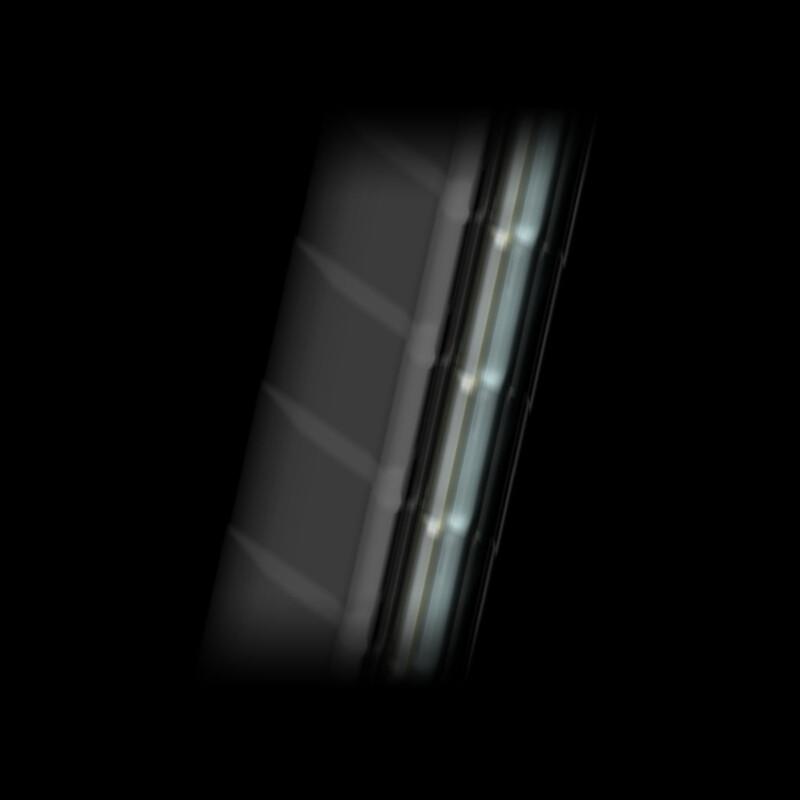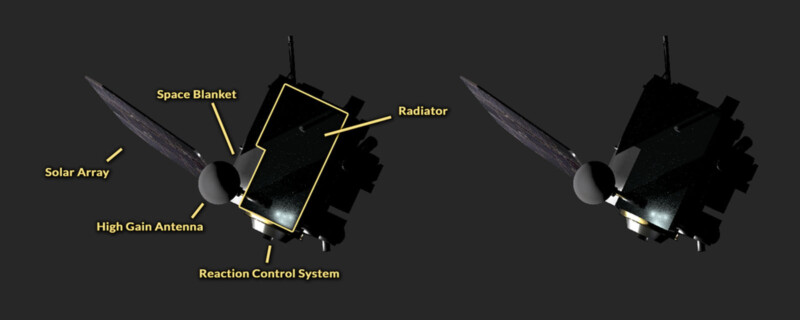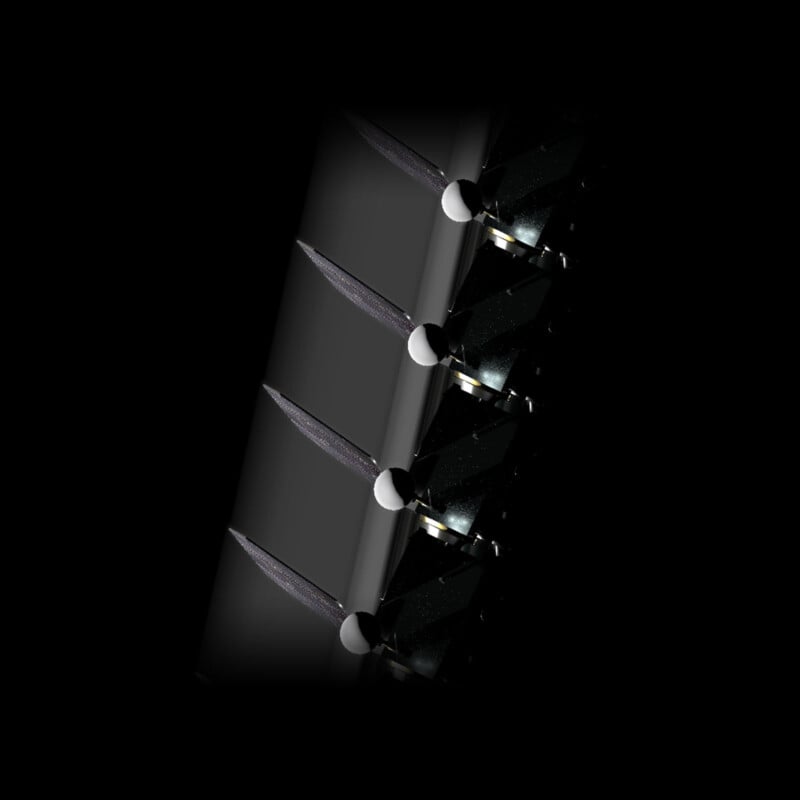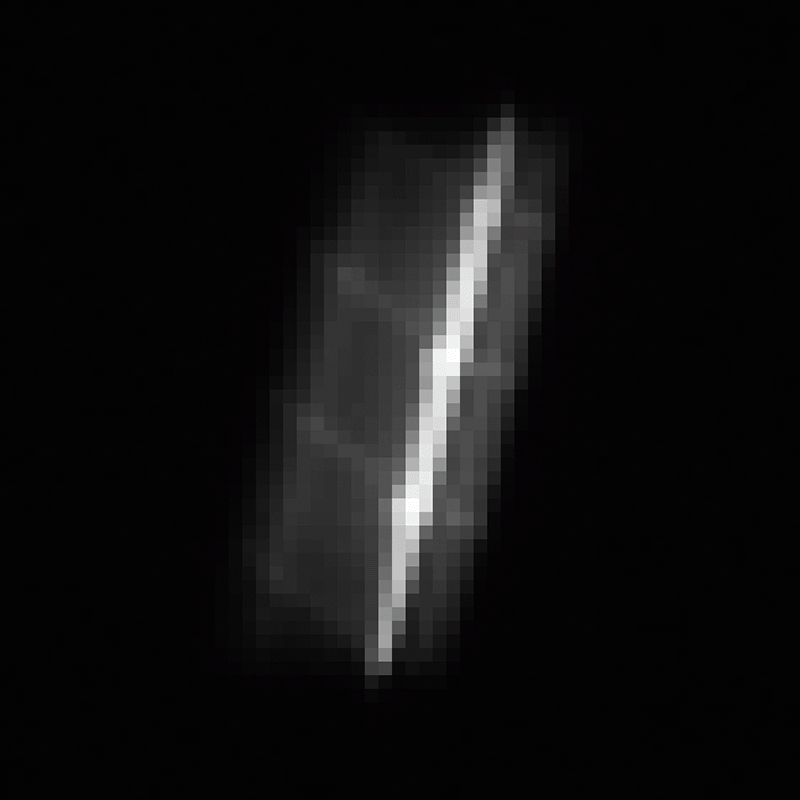NASA’s ShadowCam Shoots Portrait of Lunar Orbiter as it Flies at 7,100 MPH
![]()
ShadowCam recently grabbed a stunning shot of NASA’s Lunar Reconnaissance Orbiter as it orbited below KPLO.
ShadowCam is a NASA-funded instrument aboard the Korea Aerospace Research Institute (KARI) Korea Pathfinder Lunar Orbiter (KPLO) satellite. ShadowCam has primarily been focused on the Moon, capturing high-resolution images of the darkest parts of the lunar surface, paving the way for NASA’s future Artemis missions.
As KPLO, also known as Danuri, flew 18 kilometers (11.2 miles) above NASA’s Lunar Research Orbiter (LRO), Danuri’s onboard ShadowCam instrument captured a “dramatic” photo of the LRO. While the image may not look like much at first glance, it’s an impressive technical achievement.
The relative velocity difference between the two spacecraft was 3,180 meters per second (7,113 miles per hour). There was no illuminated Moon beneath LRO when the shot was captured, which explains the black background behind LRO.
The ShadowCam team explains, “The NASA LRO mission operations team at Goddard Space Flight Center slewed LRO 20 degrees away from the Sun to allow the radiator and back of the spacecraft to be brightly illuminated, ensuring that LRO would be clearly seen. With the ephemeris information provided by KARI and the LRO project, the relative positions and orientations of LRO, the LRO solar array, and Danuri were computed using the JPL NAIF SPICE Toolkit.”

The simulated image above was computed using an accurate CAD model of LRO, including the correct spacecraft orientation and components relative to the Sun and Danuri.
It’s possible to locate specific components of the LRO in the ShadowCam image, especially when looking at the high-resolution computer-generated image.

“During one exposure time (0.001184 seconds), LRO was smeared in the motion over 3 x 12 ShadowCam pixels. Each location of the LRO is in one ShadowCam Pixel for only 0.000097 seconds, meaning that exposure was, in effect, set by the motion rather than the commanded exposure time. Think of long exposure images of cars on a highway, the car lights show up as lines,” explains the ShadowCam team at Arizona State University.

Compared to a typical consumer camera, where an image is generally exposed all at once, ShadowCam’s imaging chip is a Time Delay Integration (TDI) camera, which operates differently to synchronize the sensor with motion.
“With a TDI camera, the sensor is similar, except it is manufactured as a narrow rectangle of pixels (in this case, 32 rows and 3072 pixels) rather than something like 3000 rows by 4000 pixels. Another big difference, the image is built up over time as the scene moves past the camera. The TDI is commanded to expose at the same rate the scene moves past the camera; this rate is synchronized with the motion to avoid blurring. Thus, each of the 32 rows ‘sees’ the same area as the scene moves past, then the rows are summed together to make one line. This design allows for effective short exposure times (minimize blurring) while maintaining a high signal usually associated with long exposure times,” ShadowCam’s team explains.
The team commanded the TDI sensor, a Hamamatsu S10202-08-01, to cycle once every 0.001184 seconds. This resulted in the camera reading a single line at a time, with each line being 3072 pixels wide. During the process, each line is exposed 32 times.
“When timed correctly, row 1 of the detector passes over the target, and the light reflected from the target is measured and shifted to row 2; as row 2 passes over the target, light reflected from the target is measured and shifted to row 3; this process repeats for all 32 rows and then that 32 summed row is read-out as one line. But it is even more complicated than it seems; in this example, after row 1 passes its measurement to row 2, row 1 is now measuring reflected light on what will be the 2nd line of the image,” says ShadowCam.
For the image of the LRO as it passed beneath ShadowCam at a blistering pace of more than 3,000 meters per second, the TDI sensor rows were shifted in the same direction as LRO moved. This effectively slows down LRO, although it is still moving super-fast. The “cadence results in LRO being doubly exposed for the instant in time that a line is read out.”

The double exposure occurred every 0.001184 seconds, and because of LRO’s speed, it was in ShadowCam’s field of view for 0.003977 seconds, meaning that LRO was “doubly exposed four times.” That’s why the LRO appears multiple times in ShadowCam’s images.
The ShadowCam team explains the process in another way:
Here is an alternate way to think of the process. Imagine that ShadowCam acquires a series of 32-row by 3072-pixel images one after another. Each image is shifted one row relative to the previous image. The images are then stacked on top of one another in stair-step fashion. The staircase is then “flattened” by summing all the values in the vertical direction (32 values). The summing process is one of the reasons for the very high sensitivity of Shadowcam, which allows it to image in shadowed areas. We were unsure of the optimal exposure time for imaging a closeby spacecraft traveling over 3000 meters per second. The trade-off was shorter exposure to reduce smear or longer exposure to ensure a high signal. In the end, we used the appropriate exposure time for imaging the Moon under normal ShadowCam conditions just in case a bit of Moon was visible.
The incredible spacecraft-on-spacecraft portrait was not happenstance — it required significant planning across Korean and NASA mission teams.